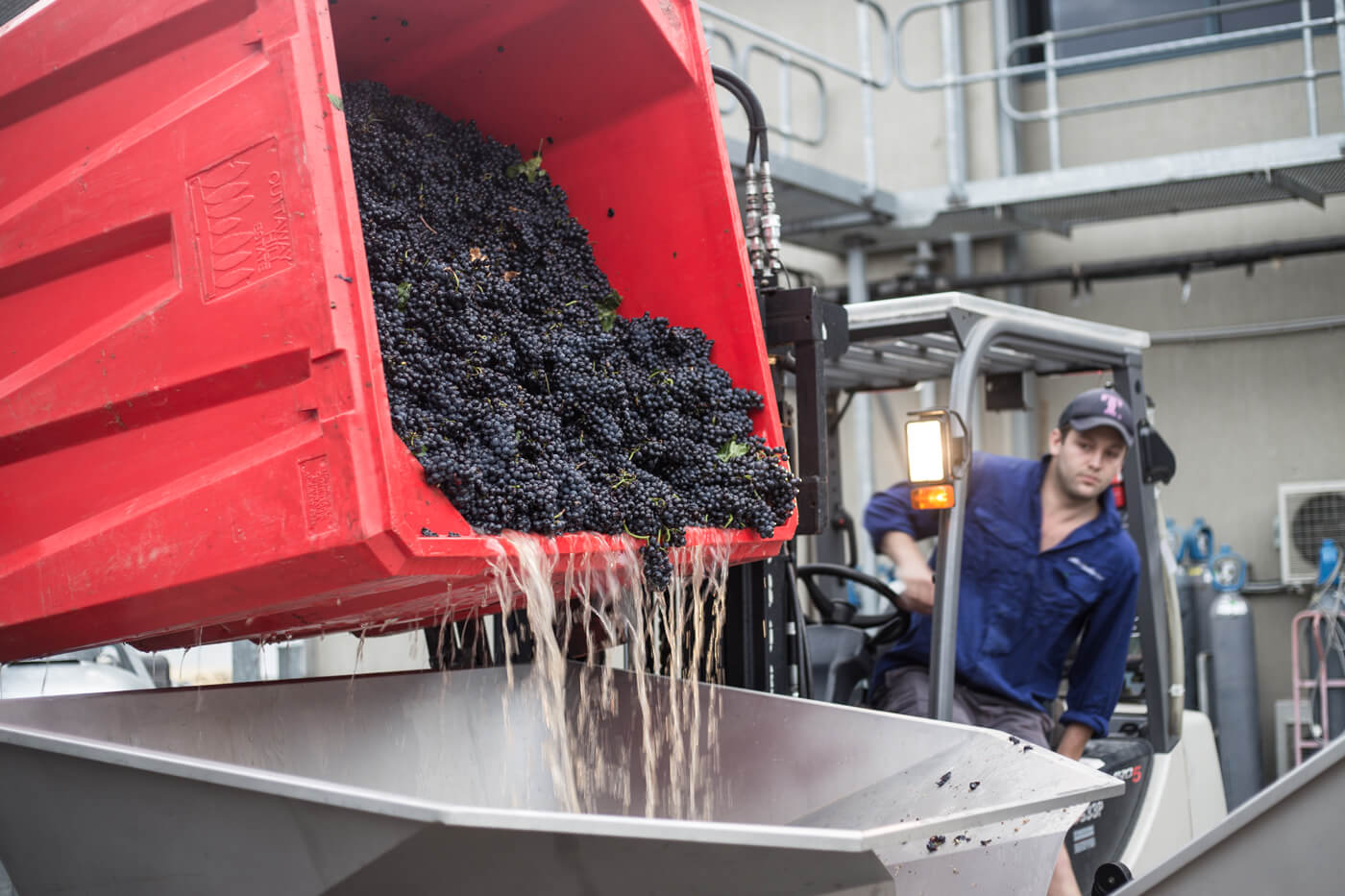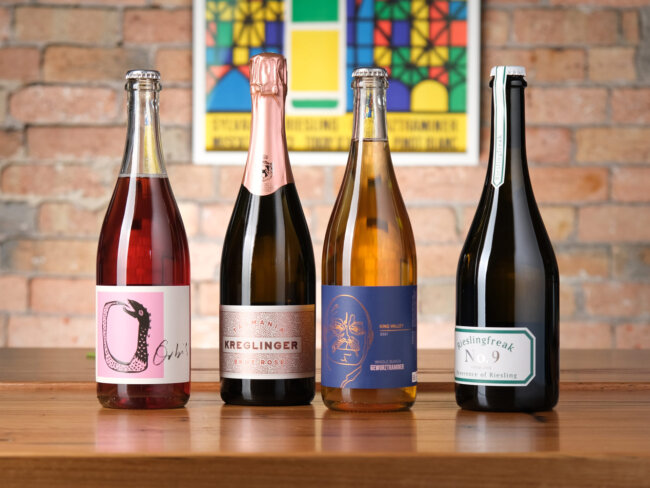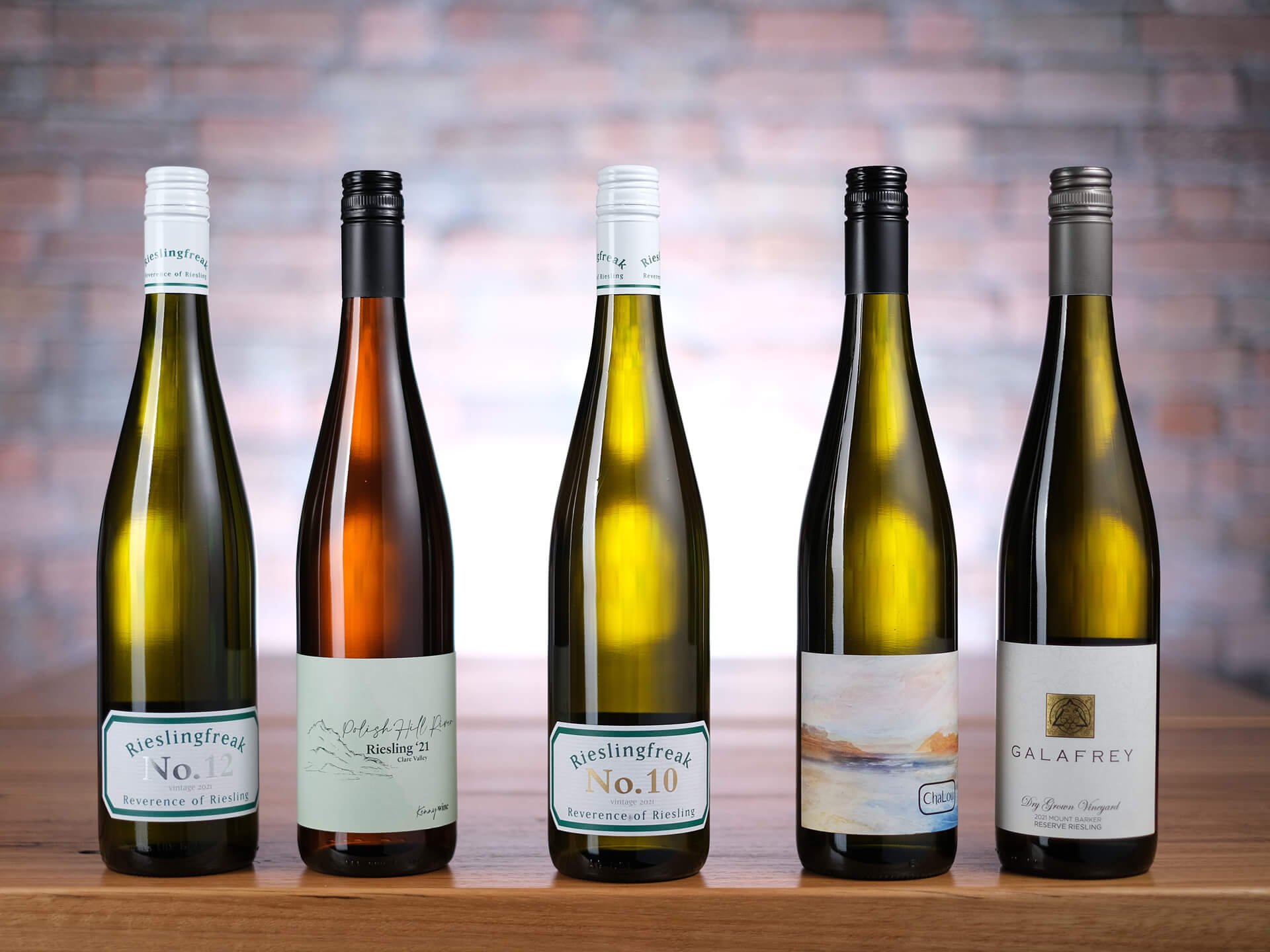The Central Ranges, in New South Wales, is a sprawling wine zone on the western side of the Great Dividing Range and west of the Blue Mountains. It captures Mudgee, Cowra and the burgeoning cool climate region of Orange within its borders. The Young Gun Top 50 for 2020 features Swinging Bridge, Gilbert, Wallington Wines and Dreaded Friend, who all work from the Central Ranges, though it’s a hard region to generalise about, with pockets both quite warm and dramatically cold.
Cool climate viticulture is as much a product of elevation as it is latitude. Tasmania is cold, sure. But Macedon is colder than much of it, and it’s a good way further north. Orange is significantly more northerly, with the ever-sunny Sydney on a lower latitude, and it’s bone-chillingly cold. Seriously.
Orange – it’s a place
Orange was separated out of the sprawling Central Ranges GI (Geographical Indicators are a formal attempt to map our wine regions) in 1997, a year after it was declared, followed by Cowra then Mudgee. But with its intensely cold conditions, Orange was a good candidate to be singled out first.
A relatively new wine-growing region, Orange is not a new agricultural one, with it well established with orchards and table grape vineyards in the mid-19th century. It wasn’t until the 1980s that wine grapes started taking off, and not until the late 90s that the region became a serious player. In fact, though Mudgee was isolated as a zone later, its vinous history stretches back to 1858, and it’s played an important role over the years.
Orange is defined by elevation, with all vineyard sites above 600 metres. Will Gilbert’s family draws grapes from their Mudgee vineyards, which are in a relatively cool spot at 520 metres, but they now focus their Gilbert label on producing wines from Orange. They source from various vineyards in the region, including the Borrodell Vineyard, which ranges over a positively lofty 930–1,030 metres. That’s very high for grapes, and typically very marginal, but with abundant sunshine and plenty of air movement to stall the progression of disease, it’s an exciting place to be growing grapes.
![]()
Swinging Bridge’s Hill Park vineyard in Orange, with Mount Conobolas in the background. It snows in these parts in winter.
Tom Ward’s home vineyard for his Swinging Bridge label is called Hill Park and tops out at 890 metres. Although the region is predominantly planted to familiar grape varieties, the range of elevations in the area mean so many others are potentially on the table. “From 600 metres, grapes are grown up to 1,100 metres, so you can get five- to six-degree variance,” he says. “Chardonnay is probably the region’s leading variety, and reds are based around pinot noir and shiraz, but we’re seeing other varieties. I know people are looking at nebbiolo, arneis… everyone’s talked about nerello mascalese. We’ve got some gamay in the ground, and we’re playing around with that. I certainly think gamay has a huge future here.”
Spilling down from the heights of Orange to the south, Cowra is the lowest lying region in the Central Ranges, while Mudgee abuts the Hunter Valley to the north. But not all Central Ranges vineyards are within those three regions. At Wallington Wines, in Nyrang Creek, Steve Mobbs manages the vineyard and makes the estate wines, as well as for his Dreaded Friend label, which is made from Wallington fruit.
The Central Ranges
“The Central Ranges is a massive region. Our vineyard however falls into no man’s land. It is neither part of the Orange GI, which is much cooler, and is just outside of Cowra, which ends at the Belubula River. Although It’s not a formally recognised GI, I usually call our little pocket ‘Canowindra’,” Mobbs says.
That pocket is 300–330 metres altitude, so is appreciably warmer than Orange, although the continental climate means the heat drains out at night, allowing for longer ripening and good acid retention in the fruit. It’s also dry, which makes farming without chemicals easier.
![]()
Steve Mobbs is winemaker at Wallington Wines, where he makes his own Dreaded Friend wines from the same vineyard.
“We farm the vineyard using organic and biodynamic principles [certified]. Warm summer days, low rainfall, no humidity and moderate winds enable us to farm this way with ease. We feel that by enhancing biodiversity and working with our natural ecosystems we are able to continue to improve the quality of our wines. Canowindra doesn’t have a huge amount of producers, but there is a high percentage that are practicing organic farming. We promote this little pocket together as an organic farming hotspot.”
Grape things in Orange
Up in Orange, a push for organic growing is happening, too. Pioneers like Tamburlaine and See Saw are seeing the region pitching towards implementing organic practices. “That’s led through to a lot of other people looking at organics, of leaning towards that way,” says Ward. “People aren’t growing the big yields that they used to, the region is focused on quality over quantity,” he also notes.
The work in the winery is also becoming increasingly innovative and thoughtful. Ward saw an increase in demand for interesting wines, and wines with a backstory, after New South Wales started issuing small bar licenses. “So, under our Hashtag range, we started to look at innovation and trials. But we’re seeing that across the region now. This next generation, this younger generation, they’re the wave that are starting to lead innovation, looking at different things to see how they can put their slant on the region”
![]()
Will Gilbert convinced the family business to create an Experimental Range.
Will Gilbert is also breaking new ground for their label, including eventually talking his father, Simon Gilbert, into making a pét-nat from riesling. “After a few years of hassling the old man, he finally let me give it a go! It was our first release to the public of this style and the feedback was positive. From this, our Experimental Range was created and an evolution in style of our other wines has followed.”
“Everyone’s trying to think outside the square in the region,” says Ward. “We’re seeing pét-nats, skin contact with whites, a lot more whole bunch. But I think the really important thing for all winemakers is working out what your own expression of DNA is. And that’s what I think Orange is really focusing on, looking at who we are. Do what we do well.”
While makers like Mobbs are carving out their own unique niche, the spotlight has shifted from the larger and longer established regions of Mudgee and Cowra to Orange, and, like the Gilbert family, many from elsewhere in the Central Ranges are sourcing fruit from there. “A lot of Mudgee wineries buy a lot of Orange fruit,” says Ward. “Cowra was the big region over Mudgee and Orange, and now Orange is a big player.”
Like other in-demand regions, though, supply is currently outstripped by demand. “Orange is struggling for fruit,” says Ward. “You can’t get fruit out of this region. It’s very tightly held. We need an expansion of vineyards. We need young people to come and back themselves because there’s so much potential.”
![]()
Tom Ward putting new meaning into skin contact wine at Swinging Bridge.
The Wines
2019 Gilbert Pétillant-Naturel Riesling $26
Lifted and aromatic here, but more in a leesy, yeasty way, and quite engaging in that. There’s ginger and some lemon barley water touches, but the riesling vibe runs strong with a direct line and citrus focus. At 10.9% alc, this is brisk, but doesn’t feel it, with all that leesy matter giving it a buffering cushion of texture. There are waves of bright citrus fruits poking out through the pillowy bits on the palate, with a sherbetty fizz to the acid.
2018 Gilbert ‘L.C.R.’ Pinot Noir $40
This is lifted in a savoury way. Red fruits, rhubarb, coolly ripe darker fruits, brown spices, orange peel, macerated cherries and whole bunchy spice, but this is very well integrated, with a flicker of smoke and tweak to the tannin profile. There’s a sense of that bunch across the palate, but not overt and it has that un-fined and unfiltered feel of extra matter, giving it texture and import. Some red-fruited amaro notes, like maraschino and almost red liquorice, play through the palate, too.
2018 Swinging Bridge ‘Hill Park’ Chardonnay $80
Lifted citrus and yellowish stone fruit. Notes of struck match, charry oak and leesy meal, but the fruit punches over, with white and yellow peach, fig and melon notes. There’s plenty of texture and flex to the palate, with generous but measured fruit strung along a line of vibrant but fine and ripe acidity.
2019 Swinging Bridge #003 ‘Amber’ $35
A blend of gewürztraminer, pinot gris and riesling, this has quite a rusty hue with a mildly cloudy haze. This is finely aromatic, with watermelon, orange peel, tomato water and rosewater, with some twiggy, smoky notes, coolly ripe red berries and bitter herbs. This is arrestingly dry, with an interplay of tannin and acid buffered with leesy texture giving it shape and direction.
2018 Wallington ‘Bald Hill’ Cabernets $25
This is quite a densely fruited cabernet, with layers of ripe dark fruits, cedar and spice notes. There’s dark fruit on the palate, too, with touches of Christmas cake spice, brief flashes of leaf, dried currants, and a subtle dried olive note. The tannins are assertive at first, but they soften a little with air, though they remain a driving force here, with the pithy grip of grape tannin. This is a very distinct expression of site, with deep flavours and a strong darkly mineral undertone.
2018 Dreaded Friend Grenache $35
This has a varietal spray of red and black fruits, and flashes of red floral notes with a dusting of spice. There’s a savoury dark mineral note, which seems like a Wallington expression that carries across different varieties. There’s grapey pithy tannin, and it sits in a mid-weight spectrum, with apparent concentration and ripeness but no overt fruit sweetness, being more savoury and food-friendly than rich.
See the full list of Top 50 winemakers in the 2020 Young Gun of Wine Awards here. Join in our virtual events here, and also vote on who wins the People’s Choice until June 1.










